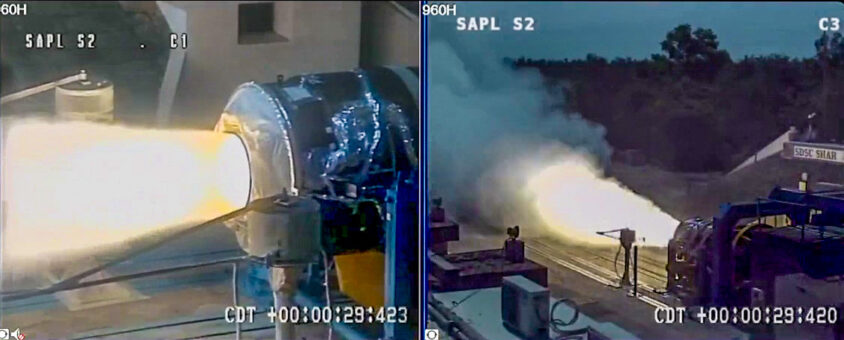Skyroot Aerospace officially announces the successful test-firing of the Stage-2 of Vikram-1 space launch vehicle.
The Stage-2 of Vikram-1 space launch vehicle test fired has been named Kalam-250.
The test firing of Vikram-1 space launch vehicle was done at the testbed of the Indian Space Research Organisation (ISRO), at its Satish Dhawan Space Centre (SDSC) in Sriharikota, Andhra Pradesh this week.
To understand space launch vehicles including the Vikram-1 space launch vehicle, consist of multiple stages:
The main stage is followed by the following ones. Stage 2 is a critical stage in the ascent of the launch vehicle, as it propels it from the atmospheric phase to the deep vacuum of outer space.
India has now witnessed its first private orbital rocket launch. Vikram-1 launch is said to be a ground-breaking event for the Indian space sector.
The test of Vikram-1 space launch vehicle lasted 85 seconds and is known to have recorded a peak sea-level thrust of 186 kilonewtons (kN).
This translates to a fully expanded vacuum thrust of around 235kN in flight reported the official release of Skyroot aerospace.
The Vikram-1 space launch vehicle – Kalam-250 is known to sport a high-strength carbon composite rocket motor.
The Kalam-250 uses solid fuel and a high-performance Ethylene-Propylene-Diene terpolymers (EPDM) Thermal Protection System (TPS) said the official release.
“This is a significant milestone for the Indian space industry, marking the successful test of the largest propulsion system ever designed and manufactured by the Indian private sector, and the first carbon-composite-built motor tested at the ISRO,” Pawan Chandana, co-founder and CEO of Hyderabad-based Skyroot Aerospace, said.
All test parameters are within expected bounds and this achievement takes us another step closer to the upcoming orbital launch of the Vikram-1 rocket,” he added.
Why the Stage-2 Vikram-1 Space Launch Vehicle Test is Vital
The stage-2 houses a carbon ablative flex nozzle along with high-precision electro-mechanical actuators for thrust vector control of the vehicle, which helps the rocket achieve the desired trajectory.
This test also had an important contribution from another centre of ISRO, the Vikram Sarabhai Space Centre (VSSC), which supplied its proprietary head-mounted safe arm (HMSA) for the test, used for the safe operation of the rocket stage.
The solid propellant in Vikram-1 space launch vehicle, Kalam-250 was processed by Solar Industries at their unique facility in Nagpur.
Skyroot had previously tested Kalam-100, the third stage of Vikram-1, test-fired successfully in June 2021.
“In this landmark test, we validated the critical system for the launch — the flex nozzle control system — during firing for the first time, making this an important milestone in our journey,” Naga Bharath Daka, co-founder and COO of Skyroot, noted.


You must be logged in to post a comment.